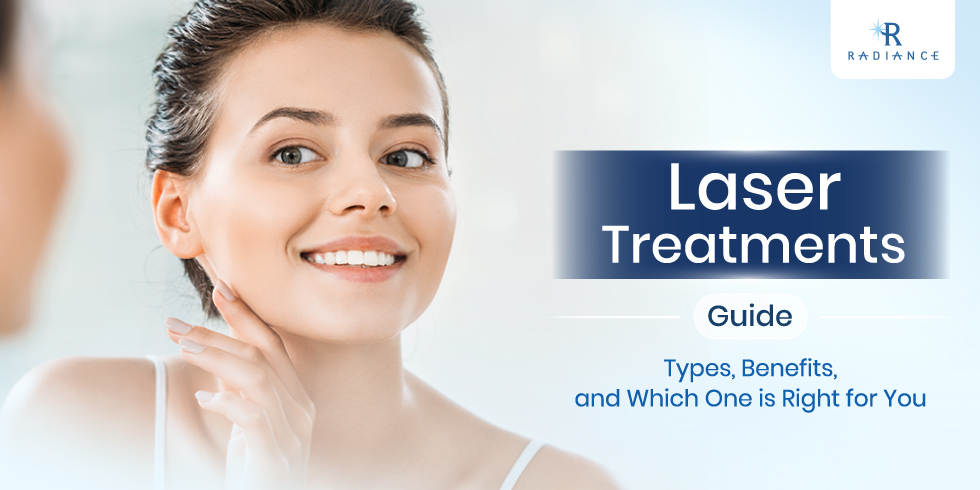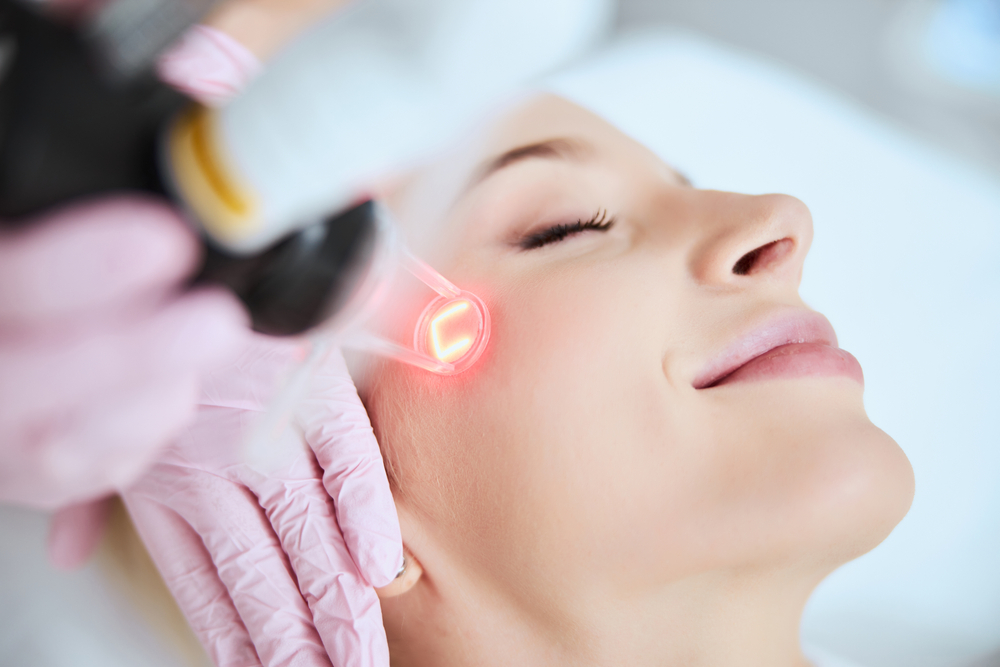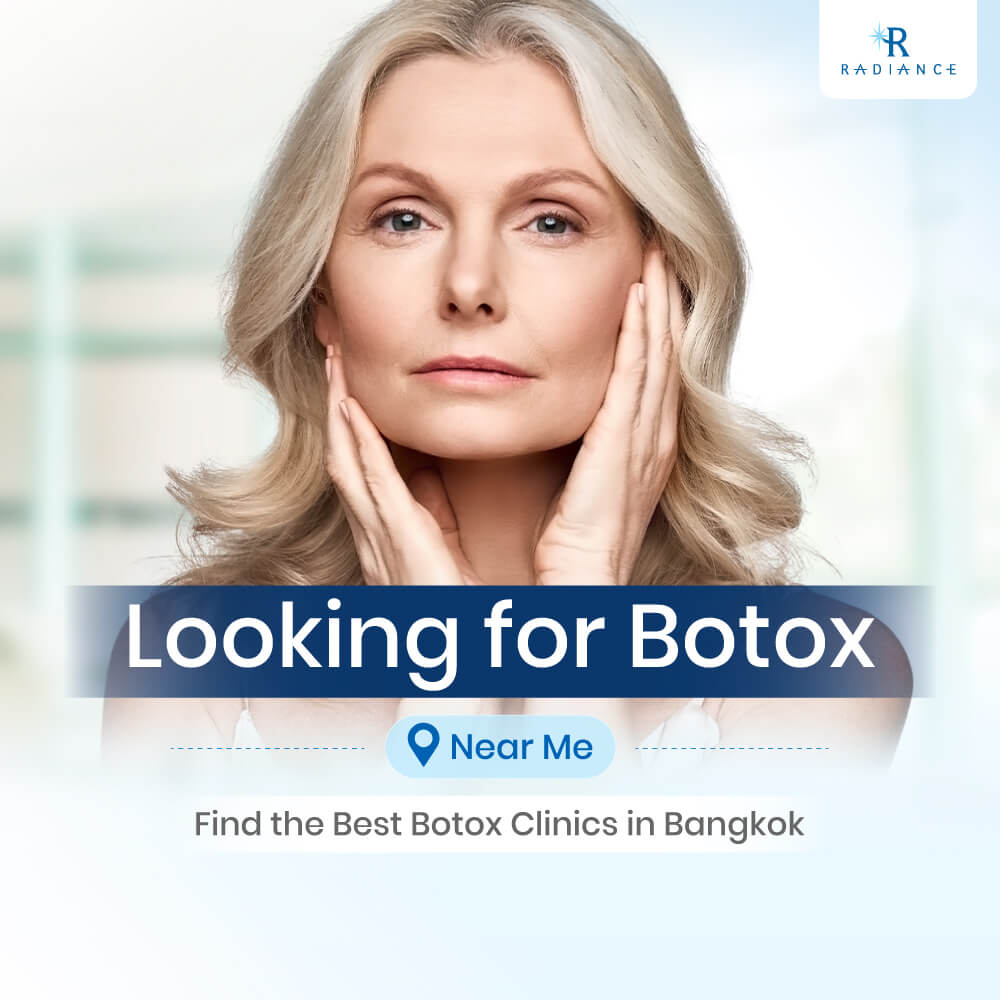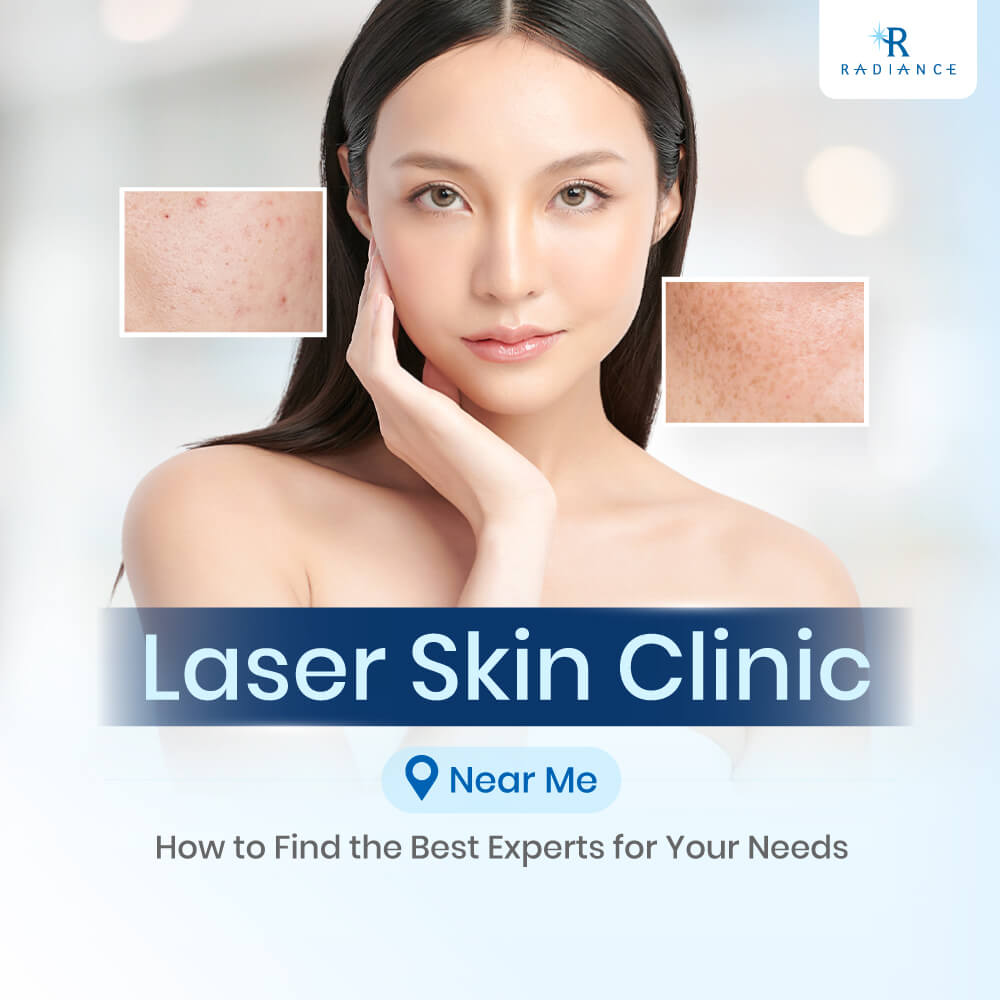
Lasers, or Light Amplification by Stimulated Emission of Radiation, is the method of amplifying light into a specific medium to direct it into a specific target. While the concept of the laser can be traced back to Einstein’s proposal in the 1910s, it was practically developed in the 1960s and has been progressing along with its application in multiple fields, ranging from laser pointers to surgical tools used by doctors.

Dermatology also adopted lasers for their treatment procedures, beginning in 1963 when “the father of laser in medicine” Leon Goldman used lasers for the “selective destruction” of cutaneous pigmented structures in the skin. The multiple research efforts in the 1960s and 1970s, including the treatment of vascular lesions, wound healing, and plastic surgery, made lasers a staple of dermatologists’ treatments for both aesthetic and medical purposes.
This article is going to provide you with essential information you need to know about dermatological lasers to help you find the best laser treatment for your perfect skin.
How does a laser affect your skin?
First of all, we had to discuss the general characteristics of lasers that make them different from other types of lights, such as sunlight or UVs.
- Coherent – laser waves travel in a synchronized fashion
- Collimated – intensity of laser retained over a long distance with low diffusion
- Monochromatic – laser being a single wavelength that made it selectively interact on targets that better absorb those specific wavelengths.
These characteristics made lasers usable for dermatological treatment, as lasers could be concentrated into a designated spot with massive energy, and it then effectively absorbs and interacts with endogenous targets such as DNA, hemoglobin, melanin, and water within your skin.
Here, the laser interacts with endogenous targets in four ways
- Photothermolysis – laser generating local heat to destroy the intended target without damaging surrounding tissues
- Photoacoustics – short pulses of high-power laser used to virtually shatter the targets
- Quasi-selective ablation – short and sharp pulse of laser with high energy used for heating of tissue
- Photosynthesis, applying laser with photosensitizer to generate “singlet oxygen” for programmed cell death (a.k.a. apoptosis) and antimicrobial properties.
Types of dermatology lasers
While several types of laser machines are being used for dermatological treatments, all of them can be categorized into two basic types
- Ablative laser – a laser that directly destroys target structure, commonly used for skin resurfacing
- Non-ablative laser – a laser that penetrates deep into “chromophores” such as pigment and blood, commonly used in the treatment of pigment abnormalities.
Here are laser systems commonly used for dermatological treatments
| Laser system | Wavelength (nm) | Absorbed by |
|---|---|---|
| Argon (blue-green) | 488-514 | Hemoglobin, melanin |
| Dye (pigment) | 500-520 | Melanin |
| Copper (green) | 511 | Hemoglobin, melanin |
| Krypton (green) | 521, 530 | Hemoglobin, melanin |
| Frequency doubled: Nd:YAG (green) | 532 | Melanin, tattoos (red), hemoglobin |
| Krypton (yellow) | 568 | Hemoglobin |
| Copper (yellow) | 578 | Hemoglobin |
| Argon ion-pumped dye (yellow, red) | 585, 630 | Hemoglobin, melanin |
| Dye (vascular) | 577, 585 | Hemoglobin |
| Ruby | 694 | Melanin, tattoos |
| Alexandrite | 755 | Tattoos, melanin |
| Nd:YAG (infrared) | 1064 | Protein, tattoos |
| Er:YAG (infrared) | 2940 | H₂O |
| CO₂ (infrared) | 10,600 | H₂O |
Sources: Dougherty and Ryan (2002)
What can you do with a laser?
As mentioned before, laser is highly effective against endogenous targets such as DNA, hemoglobin, melanin, and water within your skin. As a result, several dermatological concerns could be effectively treated using laser as primary instruments, including
Skin Resurfacing and tightening
CO₂ lasers, known for their non-selective tissue ablation, are effective for the treatment of skin surface texture and tomography of skin such as wrinkles, scars, sun damage, rhinophyma, benign skin appendages, and thickening of skin tissues such as rhinophyma.
In addition, the ablative nature of CO₂ lasers also makes them a practical hemostatic cutting tool for the treatment of skin tags and seborrheic keratosis and the removal of moles. Broad mode of CO₂ lasers is being used for the treatment of actinic cheilitis, recalcitrant warts, and some benign cutaneous tumors.
Another type of laser being used for skin resurfacing and tightening is the Erbium Glass Fractional Laser, which delivers targeted energy into the dermis for stimulation of collagen production without damaging the surface. Not only does it help tighten the skin, but the Erbium Glass Fractional Laser also effectively deals with fine lines, wrinkles, scars, and uneven skin textures.
We have already talked about laser resurfacing in-depth, which you can find more about here.
Keloids, Scars, and Warts
For the treatment of scars, Pulsed Dye Laser (PDL) is highly effective as it helps flatten the scars and makes skin markings reappear. In addition, PDL is also effective for the treatment of keloid as an alternative for surgical treatment, using laser in combination with intralesional steroids and optional partial compression of the site.
For the treatment of warts, both Pulsed Dye and CO₂ laser had been used for the treatment. However, the PDL is more effective, gives fewer side effects, and also has less chance of complications such as scarring and hypopigmentation compared to the CO₂ laser.
Skin Lesions
Skin lesions consist of vascular lesions, caused by enlarged blood vessels, and pigmented lesions, caused by abnormalities in melanin production. However, each type of lesion requires a different type of laser for effective treatment.
Common vascular lesions, both with normal background skin and diffuse erythema, require a Pulsed Dye Laser. Common cases of telangiectasia require “blue-green” lasers. Diffuse erythema requires a “large footprint” laser, commonly the argon laser. Pediatric port wine stains and hemangiomas require Pulsed Dye or Nd:YAG lasers. Meanwhile, adult port wine stains and hemangiomas require “large footprint” lasers.
By comparison, pigmented lesions, including rare cases of pigment abnormalities such as freckles, cafe au lait spots, and nevus of Ota, could be effectively treated with Q-switched lasers with a small risk of scarring while providing clear signs of fading.
Q-switched lasers are also effective in the tattoo removal of black pigment. Other pigments require different types of lasers. YAG lasers are effective against red pigments, while alexandrite lasers and ruby lasers are effective against both green and blue pigments.
Hair Removal
Nd:YAG laser is commonly used for hair removal, with visible reduction in hair after three months and new hair growth turned finer and lighter. A combination of Nd:YAG lasers and carbon-suspension solution is also effective in producing a hair growth delay at the application spot.
Other types of lasers are also being used, such as ruby lasers, which are used to destroy hair follicles through selective photothermolysis, or diode lasers, which gently heat the melanin in hair follicles to reduce future hair growth without affecting the surrounding skin, making it a versatile option for many individuals as it suitable for various skin types and hair colours.
Photodynamic Therapy
Malignant tumors such as basal cell epithelioma and non-melanoma skin cancers could be treated using lasers in combination with photodynamic agents for triggering toxic metabolites of cancer cells, with acceptable effectiveness in destroying cancer cells while providing lesser side effects than other types of treatments.
When do you need to consider laser treatments?
Here, dermatological laser procedures could provide you with versatile and precise non-invasive treatments for both aesthetic and medical purposes. We recommend you consider laser treatment as one of your options when your aesthetic concerns are
- Facial fine lines and wrinkles
- Acne scars
- Hypertrophic scars and keloids
- Lesions, including uneven pigmentation
- Treatment of sun damage and age spots
- Excessive hairs
- Removal of tattoo
- Facial resurfacing
- Facial tightening
Even though laser treatment could be considered as the best option for your perfect skin, there are several factors to consider before picking up laser treatment.
The largest one is your age, as lasers would benefit your skin in different ways, especially for skin resurfacing and tightening. For young people, laser treatment could be considered a preventive treatment for fine lines and pigmentation. In comparison, laser treatment could be considered for the reduction of aging effects as lasers could help improve skin texture and stimulate collagen production in elders. Meanwhile, laser treatment is considered a better option in the treatment of scars and keloids, lesions, hair removal, and tattoo removal of all ages.
Your skin type is also a crucial factor in a laser treatment. Some types of lasers are effective against pigments, including the natural pigments in your skin. People with lighter skin tone, according to the Fitzpatrick scale, could benefit more from laser treatment. Meanwhile, people with darker skin tone, according to the Fitzpatrick scale, have a risk of complications, including inflammation and hyperpigmentation following the absorption of laser waves.
Speaking of limitations, patients with active acne, deep wrinkles, or excessive or sagging skin should consider other processes of treatment, as laser treatment could bring in unpleasant side effects. However, our recommendation is to consult professional dermatologists for a safe and effective treatment plan.
If you are not sure yet that you are a fit or not, consider contacting us for additional consultation.

Choosing the right one?
Reading to this point, you should know whether you are currently in need of laser treatment or not. If you are considered as a candidate fit for aesthetic laser treatment, getting the best laser treatment for your perfect skin depends on choosing two “right” options: “right” types of lasers, and “right” one to operate them.

To pick the right type of laser, match your needs with these four major types of aesthetic lasers
- CO₂ Laser and Erbium Glass Fractional Laser – Best for skin resurfacing, treatment of scars, and treatment of lesions
- Pulsed Dye Laser – Best for treatment of vascular lesions and skin rejuvenation
- Q-Switched Laser – Best for treatment of acne scars, treatment of pigmented lesions, and tattoo removal
- Nd:YAG Laser – Best for acne treatment, treatment of lesions, tattoo removal, hair removal, and skin rejuvenation
In addition, the recent development in laser technology has brought in modern laser treatment devices, including
- Fractional Laser – Using a division of laser beams into thousands of microscopic treatment zones to effectively treat epidermal and dermal layers of the skin, fractional lasers are effective for the treatment of fine lines, wrinkles, acne scars, sun damage, and skin pigmentation by photoaging.
- Picosecond Laser (trademarked as PicoSureTM)- Using a division of laser beams into very short pulses to target pigmentations, both endogenous and exogenous, picosecond lasers are effective for the treatment of pigmentation lesions, melasma, and some cases of tattoo removal.
In addition, Picosecond laser machines with special fractionated handpieces are also usable for the treatment of acne scars and wrinkles.
You can use the following table to help guide you for appropriate laser machines for your skin concerns.
| Laser Type | Major Skin Concern(s) |
| CO₂ Laser | Skin Resurfacing & Tightening (deep wrinkles, significant scars), Benign Skin Growths (Skin Tags, Moles, Tumors) |
| Erbium Glass Fractional Laser | Skin Resurfacing & Tightening (fine lines, mild scars). |
| Pulsed Dye Laser (PDL) | Redness & Blood Vessels, Scars & Keloids, Warts. |
| Nd:YAG Laser | Hair Removal, Vascular Lesions, Tattoo Removal. |
| Q-switched Lasers | Pigmented Lesions, Tattoo Removal. |
| Fractional Laser | Skin Resurfacing & Tightening (overall rejuvenation, various concerns). |
| Picosecond Laser | Pigmented Lesions, Tattoo Removal, Skin Resurfacing & Tightening (acne scars, wrinkles). |
With the right type of laser, the professional operator could provide you with an effective laser treatment program. Picking the right one to operate those lasers is also important as laser treatment could be followed by adverse effects, including temporary pain, redness, blistering, and crusting or, in the worst case, infection, permanent scars, and permanent changes in skin pigments.
Our guide for picking the one who will provide you with a laser treatment is finding certified professionals to do those jobs for you. Not only have they trained for laser safety under strict operation protocol, but certified professionals can also provide you with consultancy, preoperative preparation, and postoperative care to ensure the maximum effectiveness and safety of your laser treatment program.
If you found both the “right” types of lasers and the “right” one to do it for you, it’s then become the best laser treatment for your perfect skin.
Laser Treatment at Radiance Skin Clinic
Radiance Skin Clinic, a professional aesthetic clinic located in the heart of Bangkok, is a place where you can find the best laser treatment for your perfect skin. With multiple options of laser treatments using the latest technology such as skin resurfacing using Erbium Glass Fractional Laser, PicoSureTM laser for effective treatment of acne scars, pigmentation, and skin rejuvenation, and 4D Diode laser for long-term hair removal, our teams of qualified professionals ready to provide you an effective laser treatment program that matched with your aesthetic concerns.
In addition, Radiance Skin Clinic offers a comprehensive program that includes laser treatment and other procedures. We apply our experience to skin analysis, medical consultation, comprehensive preparation, and postoperative follow-ups to make the treatment program the best applied for your perfect skin.
If you are considering the best laser treatment for your perfect skin, visit our team for a consultation at our clinic located at Maneeya Center between 10 am and 7 pm, or leave a message on our online channel here.
Phones and WhatsApp: (+66)82-695-2496
LINE: @radiance
Facebook: https://www.facebook.com/RadianceClinicBkk
Website: https://radianceskinclinic.com







